
Despite the worldwide pandemic and the recent announcement made by the US Secretary of Defense about a possible move of the ‘Warhawks’ to Italy, the squadron is as combat ready as always. Ludo Mennes and Frank Visser visited Spangdahlem Air Base, Germany in September 2020 and spoke with its current commander.
Spangdahlem Air Base
With the increasing tensions in the fifties between the West and East, United States Air Forces in Europe (USAFE) wanted to move their fighter units West of the river Rhine, to increase air defense warning time. The USAFE started construction of Spangdahlem Air Base in 1951 in the Rheinland-Palatinate region and the first American troops arrived the following year.
Over the years that followed Spangdahlem hosted different wings before the 52nd Tactical Fighter Wing (TFW) was transferred from Suffolk County AFB, NY on December 31, 1971. Upon activation the wing assumed control of two squadrons, the 23rd Tactical Flying Squadron (TFS) flying the F-4D Phantom II and the 39th Tactical Electronic Warfare Squadron (TEWS) flying the Douglas EB-66E/C ‘Destroyer’. The third squadron, the 480thTFS, was activated on November 15, 1976. In November 1983 the 52nd TFW was reorganized and transformed into the only all defense suppression wing outside the USA. All fighter squadrons flew F-4E and F-4G models paired together in Wild Weasel “hunter/killer” teams, capable of locating and destroying radar-guided surface-to-air threats. From April 1987 the 23rd and 480th squadrons started to receive Block 30/32 F-16C/D Fighting Falcons, later on being replaced by Block 50 versions. On October 1, 1991 the 52nd TFW was redesignated as 52nd FW.

The final Fairchild Republic A-10 Thunderbolt II squadron in Europe was transferred early 1993 from RAF Bentwaters to Germany. With the closure of Bitburg Air Base the 53d Fighter Squadron relocated in January 1994 to Spangdahlem with their F-15C/Ds. The 480 FS was also inactivated during October 1994.

After the restructuring the 52nd FW consisted of the following operational flying units: 22d Fighter (F-16CJ/DJ), 23d Fighter (F-16CJ/DJ), 53d Fighter (F-15C/D) and 81st Fighter (A/OA-10A).
In 1999 the 53rd FS was inactivated transferring its F-15s to Langley AFB, VA and RAF Lakenheath, UK. From 2001 the USAF modified over 600 Block 40/50 F-16C and Ds in what was called the Common Configuration Implementation Program (CCIP). The CCIP was the most extensive program in modifying USAF F-16s. Major changes to the aircraft avionics and cockpit were part of this program. These modified F-16C/Ds were called CM or DM.
Since 2013 the 480th Fighter Squadron has been the sole fighter unit operating out of Spangdahlem Air Base. In 2015 the US Secretary of Defense announced the results of the European Infrastructure Consolidation (EIC) review. Under the EIC the decision was made to transfer the 352nd Special Operations Wing from RAF Mildenhall upon closure in 2022. However on July 29, 2020 the US Secretary of Defense announced a change of plans to drastically cut the number of American servicemen in Germany by around 12.000. The relocation of the 100th Air Refueling Wing and 352nd Special Operations Wing to Germany was cancelled and both units will now remain in the United Kingdom. Instead of these moves, it has been announced that the 480th FS will move to Italy. The most likely possibility for the 480FS would be to move to Aviano Air Base to join the 31st FW, which already has two F-16 units, the 510th and 555th FS. The plans and details for implementation are still being worked, and an exact date and timeline is still uncertain.
480th Fighter Squadron
The 480th TFS was activated at Spangdahlem Air Base on 15 November 1976 as part of the 52nd

Tactical Fighter Wing, flying the McDonnell Douglas F-4D Phantom II. In 1983 the unit was tasked with the Wild Weasel mission, operating a number of F-4G Phantom II Wild Weasel frames next to their F-4E models. From April 1987 on the unit began receiving General Dynamics F-16C Fighting Falcon aircraft, operating them in tandem with the F-4G. The squadron deployed to the Middle East for Operation Desert Shield and flew Suppression of Enemy Air Defenses (SEAD) missions between January and April 1991 during Operation Desert Storm. In 1993 the ‘Warhawks’ were the first unit to receive Block-50 F-16s and again were tasked with the SEAD role. On April 1, 1994 the squadron was inactivated, being replaced by the 22nd FS, which had been relocated from neighbouring Bitburg Air Base. The 480th FS was reactivated again on August 13, 2010 and got into action in 2016. The squadron was deployed for six months to the Middle East for Operation Inherent Resolve. The squadron broke an Air Force record on September 16, 2016 when the 1,900th precision-guided munition was dropped. It exceeded the most amount ever delivered by an F-16 unit within a six-months period. All this effort was rewarded in 2017 when the ‘Warhawks’ received the U.S. Air Forces in Europe Commander’s Trophy for Outstanding Fighter Squadron for their overall performance including areas as aircrew training, safety and operations support.

Presently this squadron is the only USAFE unit specialized in SEAD. It has currently 25 F-16CMs and 2 F-16DMs in its inventory, which makes it the largest SEAD squadron in the USAF. The current commander of the 480th FS is Lieutenant Colonel Patrick “Phats” Kennedy. With nearly 2.000 hours on the F-16 he is a dedicated "Wild Weasel" pilot. In his years of service he has flown the F-16 since 2005 from Kusan Air Base in South Korea, Aviano Air Base in Italy and Spangdahlem Air Base in Germany. He also graduated from the Weapons School at Nellis AFB in 2011.
Mission profile Warhawks
The SEAD mission, also known as “Wild Weasel”, is about entering enemy airspace early and disrupt or destroy their air defenses. The destruction of the air defenses allows the main strike package of aircraft to attack targets with a much lower risk of being shot down themselves.

The SEAD mission started roughly 50 years ago with the F-100F ‘Super Sabre’, and then moved to the F-105F and later the G model ‘Thunderchief’. The F-4G ‘Phantom II Wild Weasel’ played an important role in 1990 during Operation Desert Storm. The USAF flew almost 4.000 SEAD missions destroying about 200 Iraqi military surface-to-air missile sites. The standard configuration during a SEAD mission for the F-16s is the Sniper Advanced Targeting Pod for target identification and precise weapons guidance on the right intake hard point. For its self-protection the F-16s carry the Raytheon AN/ALQ-184 ECM pod under the centerline. On the left intake hard point the F-16s are standard equipped with a Texas Instruments AN/ASQ-213 HARM Targeting System (HTS). This system contains a very sensitive receiver enabling the aircraft to track the location of hostile radar systems and passing the information to the cockpit displays and missiles.
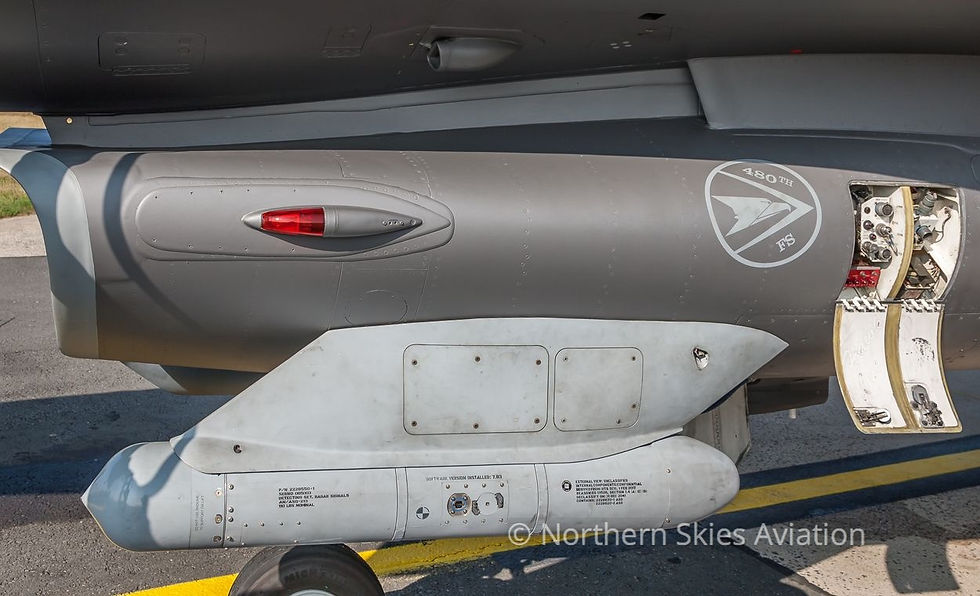
The aircraft normally fly with a weapons load of two AIM-9, two AIM-120 and two AGM-88 HARM missiles. Both the Raytheon AIM-9L and X Sidewinder, a short-range air-to-air missile and the Raytheon AIM-120 AMRAAM (Advanced Medium Range Air-to-Air Missile) are used for self-defence. For the destruction of enemy radar systems the F-16s use the Raytheon AGM-88 High-Speed Anti Radiation Missile (HARM). The HARM is a large tactical air-to-surface anti-radiation designed to home in on electronic transmissions coming from surface-to-air radar systems. The F-16s have the HARM avionics/Launcher Interface Computer (ALIC) on board resulting in a full autonomous employment capability of the HARM missile. Executing SEAD missions is so unique that information gained by all U.S. Air Force "Wild Weasel" units worldwide is shared with each other and partners. On a regular basis, weapons and tactics

conferences are held where weapons information and tactics are shared so other units and SEAD squadrons can benefit from it. Rotating "Wild Weasel" pilots between units is a common thing and to train new tactics and the Weapons School at Nellis AFB also plays an important role. During exercises, the “Wild Weasels” often train with multi-national partners who may not get to often fly with SEAD assets. On a regular basis, seminars are also organized, or invitations by Academies are accepted to talk about SEAD now and in the future and a lot of information is shared. Integrating the fourth generation F-16 with the fifth generation aircraft like the F-22 and F-35 is now getting more common. Lt Col Kennedy: "Fourth and fifth generation integration creates a synergistic effect to where we are both more lethal and effective. I flew with F-22s and F35s and was really impressed with the level of interoperability between 4th and 5th generation assets. We were given difficult tasks and still hit homeruns on very tough missions."
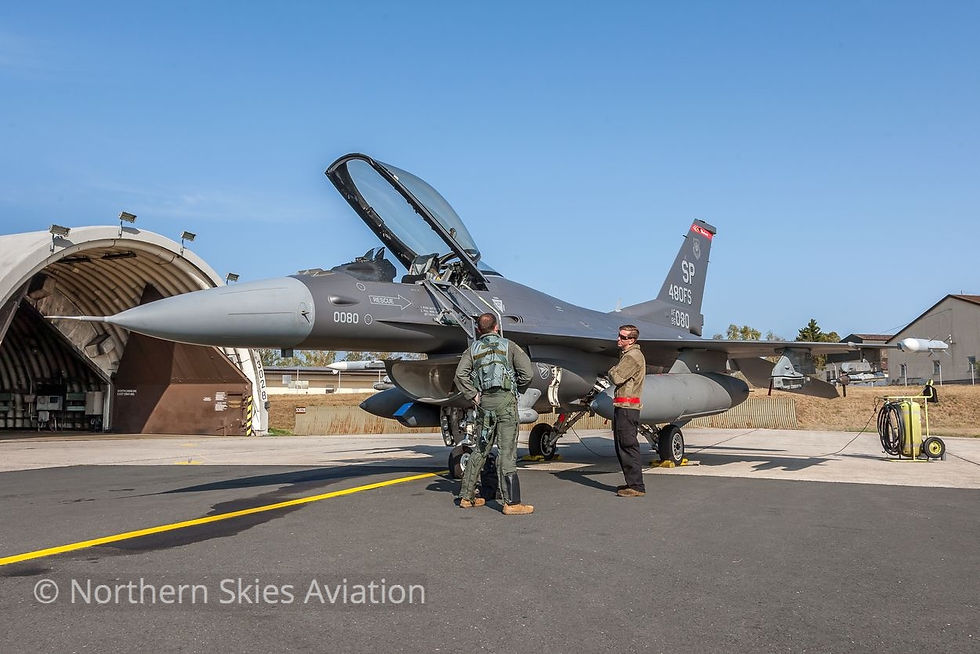
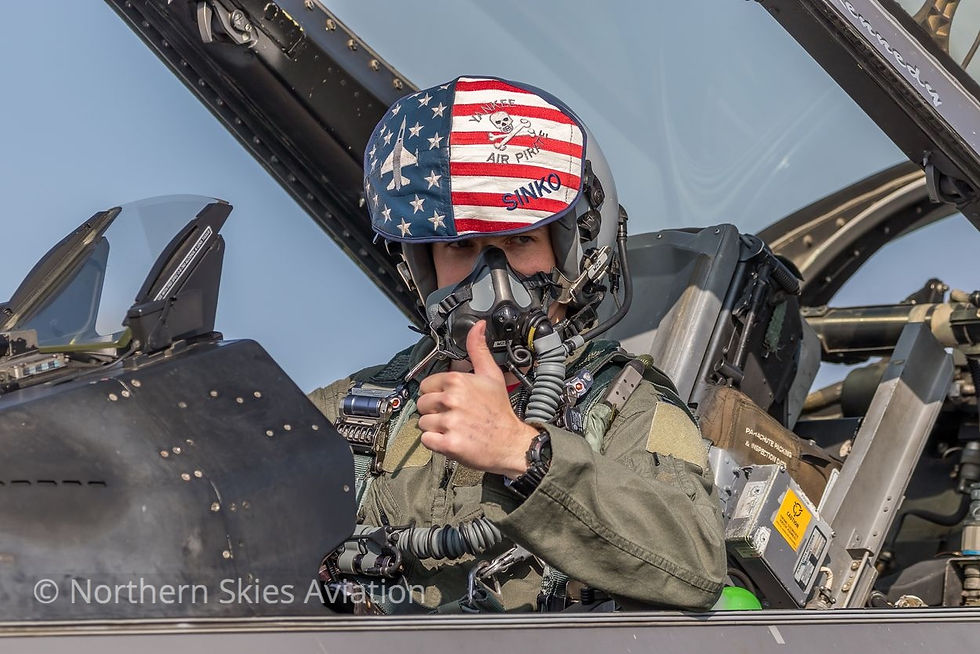
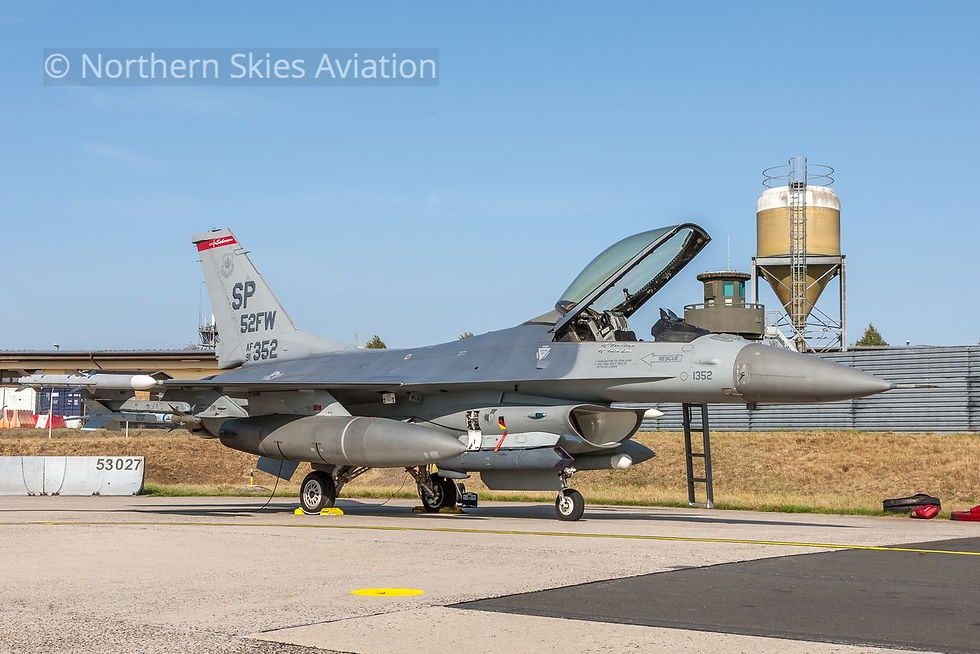

Because enemy air defenses are constantly evolving, flying "Wild Weasel" missions is getting more challenging for the fourth generation F-16. To survive and increase lethality, multiple upgrades are continuing to happen on the F-16. That is why in July 2020 the commander aircraft with serial 96-0080 returned from overhaul with SABCA in Belgium, painted in the Have Glass 5th generation paint scheme. This scheme is the evolution of the standard Have Glass program where all USAF F-16s received a two-tone grey color scheme made with a special radar-absorbing paint. This paint, made of microscopic metal grains, is capable of reducing the aircraft Radar Cross Section, which makes it less visible on radar. The Have Glass V is the latest version of the special paint and further improves the SEAD mission profile. It is likely more aircraft of the 480th FS will get this color scheme.
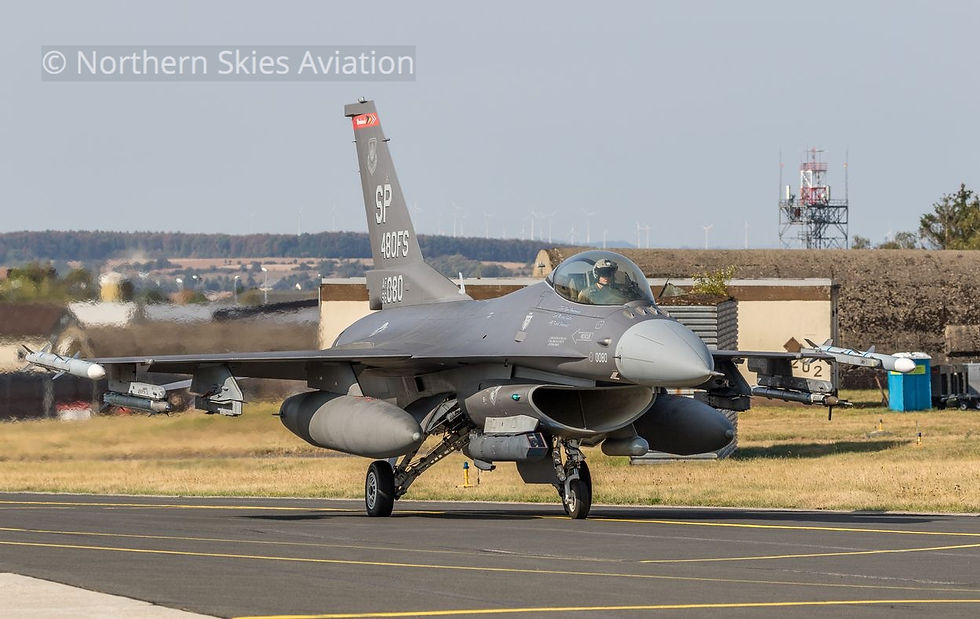
Flying SEAD missions is the main task for the 480th FS, but not the only task. Besides flying these missions they fulfill air-to-air missions like defensive counter air and air-to-ground missions such as close air support (CAS). To keep up the squadron’s readiness, a so-called phase-based training program was developed. Every three to four months the squadron goes through a training program cycle, which starts with Basic Fighter Manoeuvres (BFM), Advanced Combat Maneuvers (ACM), Defensive Counter Air (DCA), Offensive Counter Air – Escort, and finally ends with flying SEAD missions. The 480th FS also includes other mission sets to ensure pilots stay proficient in all F-16 missions sets.
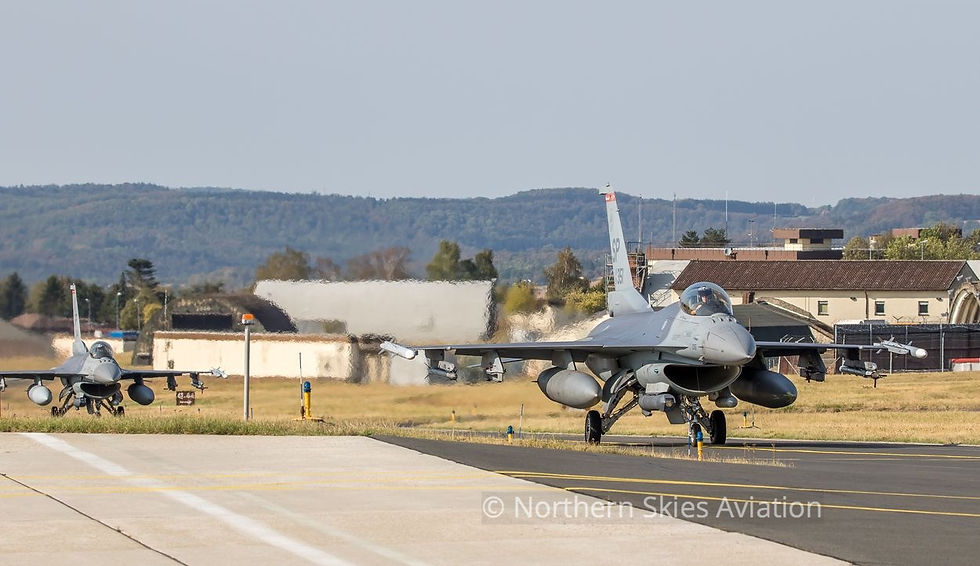
Covid-19 a limited showstopper
“With COVID mitigation measures and following safety guidelines such as mask wear, we are at full operations despite outbreak of the pandemic. We still stand ready to perform all our missions. Even though we have had a limited ability to travel, we executed high-end training with two large forces exercises in England and Germany and just got back from a deployment to Poland. A short deployment to Portugal will hopefully take place next year as well”. Lt Col Kennedy: "We have been to Portugal the last two years and we have a great partnership with them. The airspace and weather is amazing and the friendships are even better."
“Right now, we’re still training with other flying units from home station. While we limit physical closeness we increase other communications to train with each other. Everybody is taking off during the exercises from their own bases and we go meet in the air. We fly and fight and afterwards all the debriefing and mission planning is done by phone calls and video chat. While face-to-face mission planning and debriefing is best, we have proven that this method also works out quite well.” Lt Col Kennedy explains.
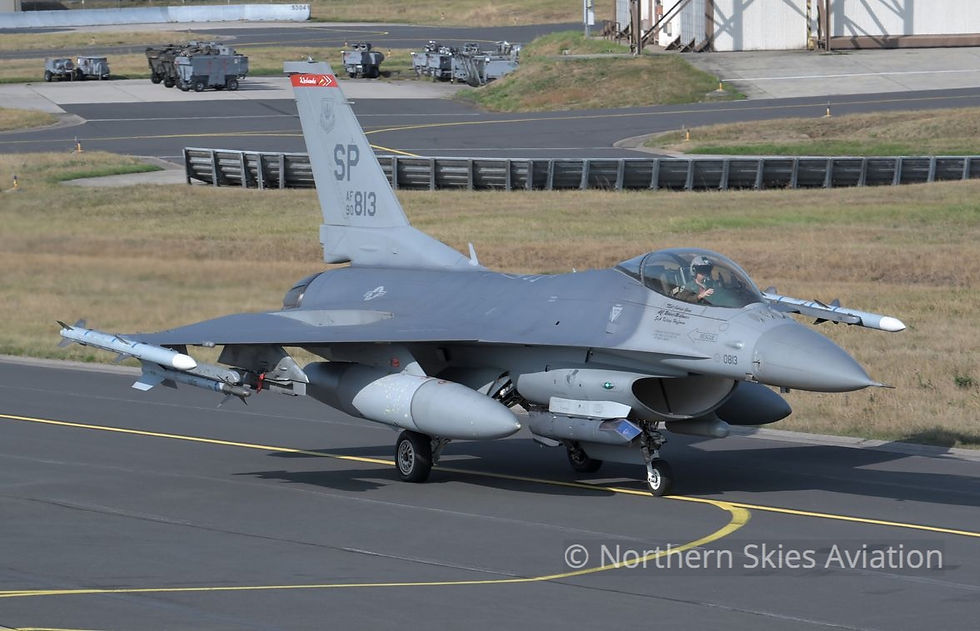
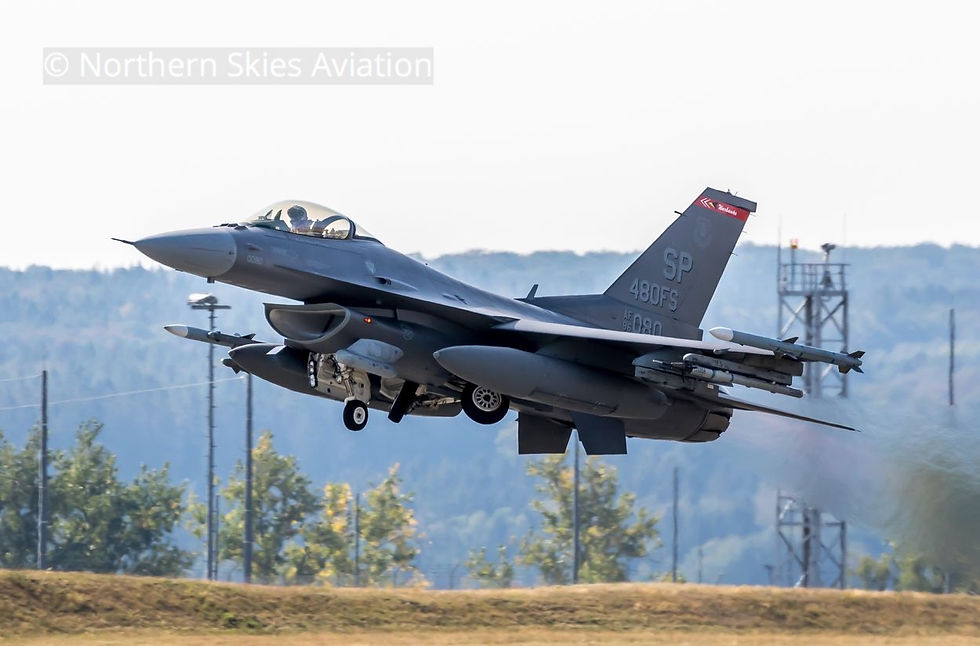
From August 17, 2020 the ‘Warhawks’ deployed to Lask Air Base in Poland for a two-week deployment with 18 aircraft. Under the name of Aviation Detachment Rotation ADR 20.4 the so-called 480th Expeditionary Fighter Squadron operated together with the F-16s of the 10.ELT at the 32ndTactical Air Base. The goals of an ADR are to enhance partner interoperability, maintain joint readiness and assure regional allies. As Kennedy continues about ADR 20.4; “The cool thing was that we got to fly every single day with our Polish partners and we met all the mission requirements. The Polish airspace is fantastic for combat training with very few limitations. We were able to fly different mission profiles training air-to-air and air-to-ground mission sets. We flew close air support and participated in large force exercises practicing Defensive Counter Air and SEAD. For CAS, we trained with some NATO special forces personnel that were about to deploy. The training was invaluable for us as we strengthen the relationships and interoperability between us and Poland.”
Lt Col Kennedy is very clear about the importance of the deployments as he states: “The one thing that makes all these deployments extremely important with all our NATO partners is trust. Trust doesn’t magically happen, you have to work on it , you have to build it over time. Trust leads to better interoperability and better interoperability leads to effective deterrence. Ultimately, operating together with trusted partners ensures another day of peace for NATO”.
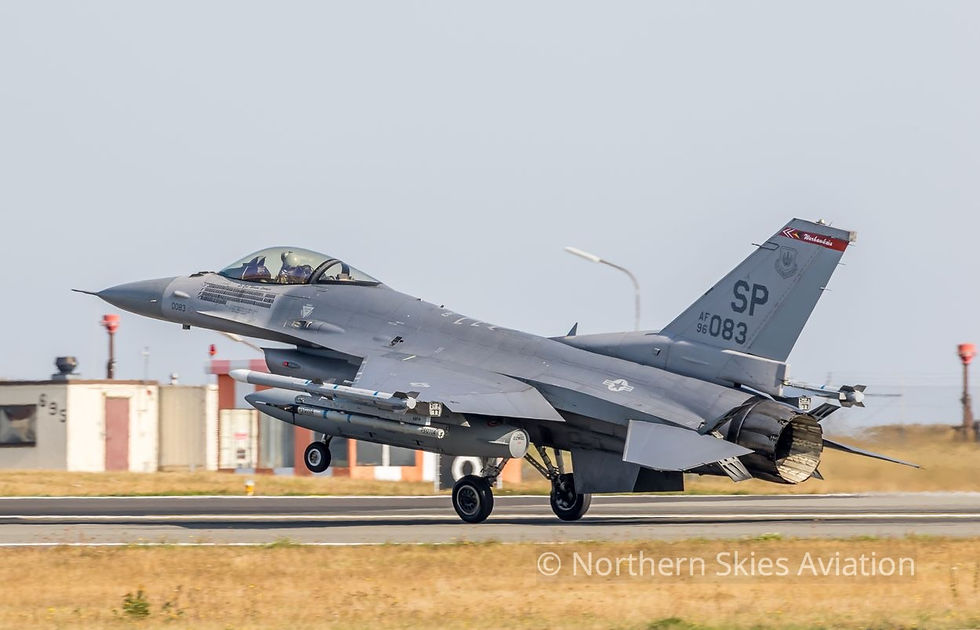
Astral Knight 2020
Due to a small number of Covid-19 infections, and in the interest of protecting the health and safety of the people assigned to the 52nd Fighter Wing, the decision was made to participate in the annual Astral Knight exercise from Germany. The yearly exercise was planned to be flown from Lask, and the shift resulted in much longer sorties back and forth to Poland. But the 480th was still able to achieve the same high-level training opportunities for all participants.
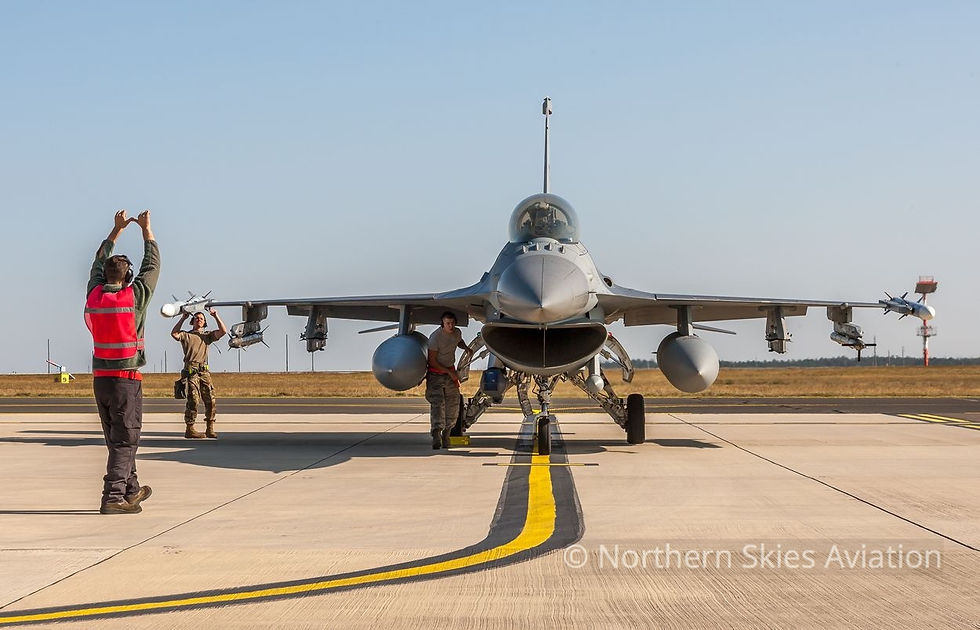

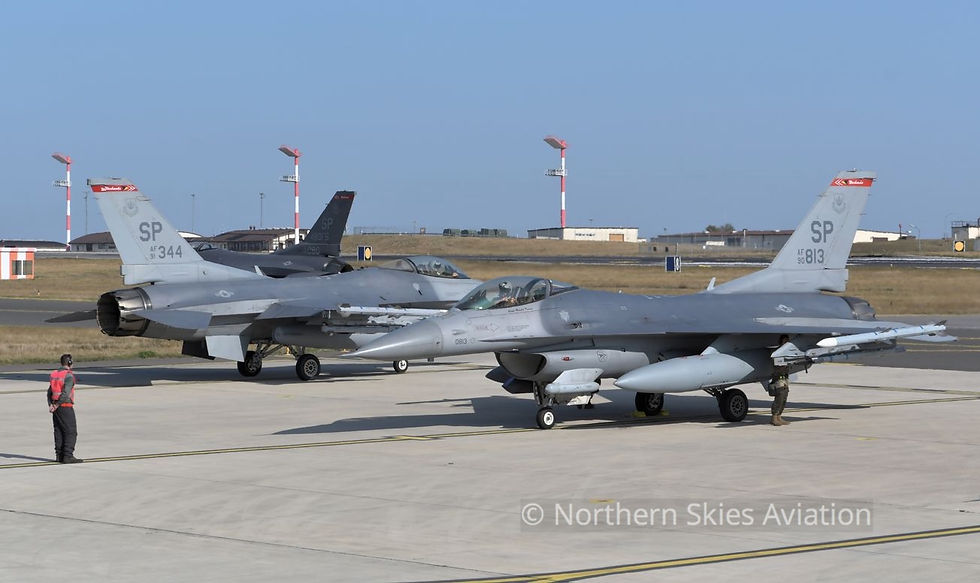
“First in and last out, is our motto and we really lived up to it during our flights over Poland” as Lieutenant Colonel Kennedy proudly explains. “We are going to be the first jets into the fight and the last ones to leave to make sure everyone can successfully complete their mission.” In preparation for and during the exercise Astral Knight 2020 the ‘Warhawks’ flew numerous air combat training missions out of Spangdahlem Air Base to the mission area over Poland. These four to five hour missions could only be flown by refuelling multiple times over Poland. Astral Knight 2020, was held between September 17 and 25, 2020 and was a joint, multinational integrated air and missile defense exercise involving relevant air assets in Poland (bases and aircraft) and the Baltic States. The air assets involved included USAF F-16s, KC-135s, KC-10s, E-3s, and B-52s alongside with Polish F-16s, Su-22s and Mi-17 helicopters. Furthermore, U.S. Army Europe provided soldiers and equipment to operate the Patriot surface-to-air missiles.
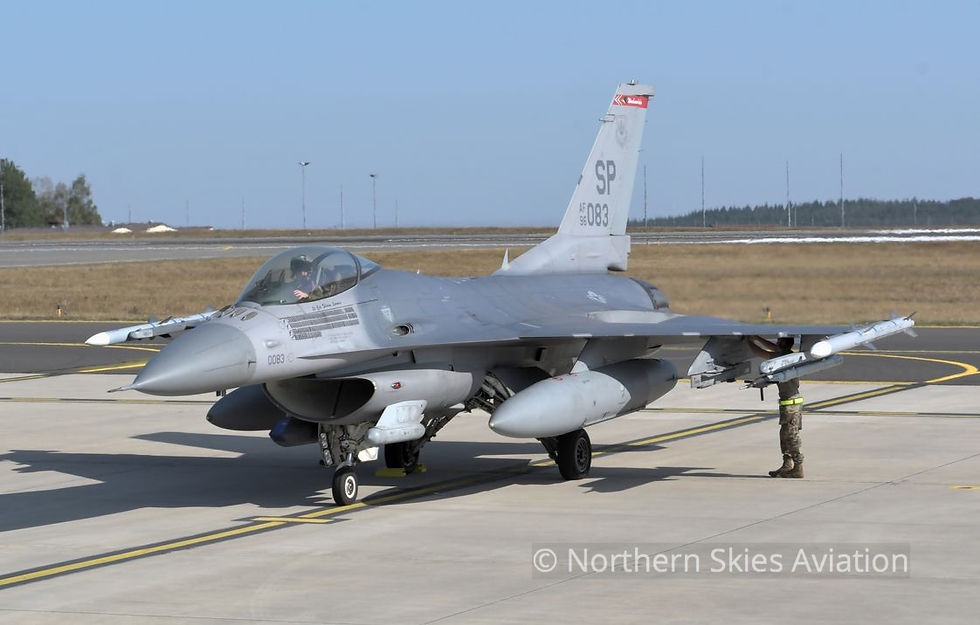
"For executing the missions during Astral Knight, where well over 30 aircraft are involved, we always create a Mission Planning Cell or MPC. The MPC is responsible for detailed planning and coordination of each mission. The planning process is ideally less than ten hours. During Astral Knight, Defensive Counter Air and SEAD were our main tasks." Lt Col Kennedy explains. The exercise aimed to “develop and exercise an enduring regional integrated air and missile defense architecture, command and control integration, coordination, and interoperability of air and land capabilities with overlapping operations into the integrated air and missile defense enterprise.”
Future
No matter what the future brings for the ‘Warhawks’ and their families, Lt Col Kennedy is confident that SEAD will be relevant for a long time to come.
“Our squadron has an amazing history of heroic fighter pilots and combat valor. From Lance Sijan, a Medal of Honor winner, to nine MiG kills in Vietnam to recent combat success in Operation Inherent Resolve led by Lt Col Papa Murphy. The 480th Fighter Squadron has been activated and deactivated on multiple occasions in the past and the pilots have proven themselves time and again. We are ready to fulfil our mission anywhere our nation needs us. SEAD will always be there because enemies will try to defend themselves and it is our job to counter it. While SEAD is challenging and rewarding, top leadership understands why it is so strategically important. The challenging aspect of SEAD is so motivating that everybody in the squadron brings their best to every mission," according to Lt Col Kennedy.

He continues: "We have lots of motivated people in this squadron, everybody strives to exceed expectations and I am very grateful for that. Airpower is a team sport and everybody has to be focused on achieving commander intent so we can be successful. We also know that our maintenance crews are a significant factor in why we are so good in what we do. Our crew chiefs can even tell you how many HARMs we shot and often ask how many SAMs we killed. We are a winning team and understand our mission. As ‘Warhawks’ we put ourselves in harms way, so others can succeed in their missions. That's why I am extremely proud to be a Wild Weasel.”

Northern Skies Aviation would like to thank the Public Affairs Office of the 52nd Fighter Wing and LtCol. Kennedy of the 480th Fighter Squadron "Warhawks" for their cooperation in writing the article "The best never rest" for Combat Aircraft Magazine. The article was published in the December 2020 edition and can be seen on our website under Publications.


Comments